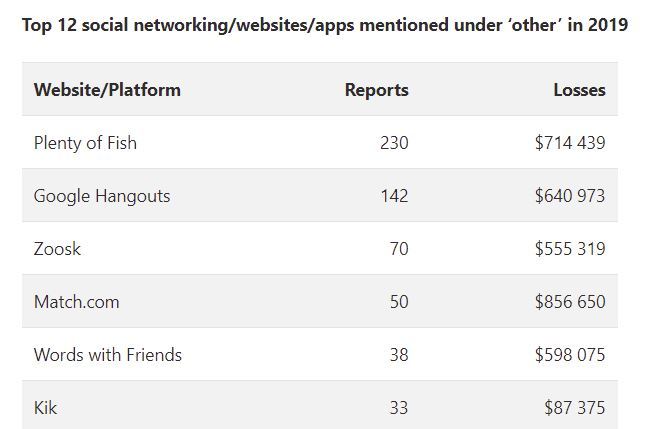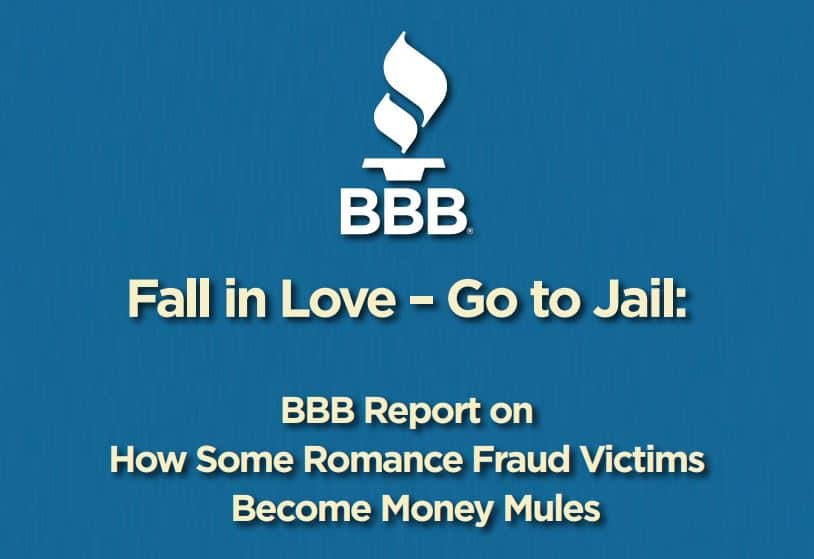
Dating and romance scams are rife both offline and online, with fraudsters posing as love interests to swindle unsuspecting victims out of piles of cash. With more people isolated and lonely during the pandemic, and the internet their major means of communication, we’re seeing an increase in the prevalence of online romance scams. But as our romance scam statistics show, this type of scheme is far from new.
Many victims of dating scams believed something like this could never happen to them, but it’s surprising how convincing criminals can be, especially when it comes to matters of the heart. We revealed how to spot and avoid dating and romance scams in an earlier post, but here, we look at some of the most recent and prominent facts and statistics surrounding this topic. Let’s get started!
1. Romance scams resulted in losses of over $1.3 billion in the US in 2022
Data from the Federal Trade Commission (FTC) shows that in the US, romance scams are one of the most profitable ventures for scammers. Victims lost $1.3 billion to these types of scams in both 2021 and 2022, which was a whopping 78 percent increase over 2020.
2. Canadian romance scam victims lost more than $50 million in 2021
The Royal Canadian Mounted Police (RCMP) reported almost 1,249 romance scam complaints in 2021, up a quarter in just two years. These included reports from 925 victims who lost a total of $50 million, an average of $54,000 per victim.
The problem is that this is likely just a fraction of those impacted. As the RCMP notes, many victims are too embarassed or ashamed to come forward.
3. Australians lost at least $568 million to scams in 2022
In 2022, Australians lost a total of $568 million to scams. A significant portion of this ($40.6 million) involved romance scams, with nearly 3,700 in this year alone. That said, investment scams caused higher losses ($377 million) and more victims (9,361).
4. Social media remains a key attack vector
Australia’s Scamwatch found that while contact tends to begin over email, phone, or text message, over 13,000 victims were initally approached on social media. This data was backed up by the FTC, which recorded that 162,863 Americans were contacted this way in 2022.
Statistics from 2022 also reveal that those over the age of 65 are most likely to suffer the highest financial losses from romance scams. They also account for the majority of reports, with 49,000 individuals in this group saying they were duped in 2022.
5. Scammers are turning to unusual apps to target victims
One observation noted by Scamwatch is that romance scammers are increasingly using apps such as Google Hangouts to communicate with victims. Others use online games like Words with Friends and Scrabble to dupe their victims. Some of these appear to be used as a way to reach victims who aren’t actually seeking a relationship. According to ACCC Deputy Chair Delia Rickard:
We’ve seen an increase in reports from people who did not originally seek an online relationship but have been caught up in a dating and romance scam.
$640,973 was reported lost through 142 scams on Google Hangouts and $598,075 through 38 scams via Words with Friends.

6. Bank transfers and gift cards are popular payment methods
According to the FTC, most victims paid scammers using gift cards. However, the people who lost the most on average were those that sent cryptocurrency or who wired money directly to a scammer.
7. Romance scammers have lots of different stories
The FTC has taken data from over 8,000 romance scams and broken them down into eight distinct stories. Essentially, scammers use one of these stories to get victims to send them money or foster a relationship.
In 2022, the most common lie was “I or someone close to me is sick, hurt, or in jail”, occuring in almost a quarter of all incidents. Next were “I can teach you how to invest”, “I’m in the military far away”, and “I need help with an important delivery”, all at 18 percent.
8. US seniors lost $84 million to romance scams in 2019
An FTC report focusing on older adults found that people 80 and over were more frequently tricked by romance, business impersonation, and investment scams, but tended to lose more to prize, sweepstake, and lottery scams overall.
This report did note, however, that romance scams have a higher reported median loss than other frauds. In fact, from romance scams alone, seniors lost over $151 million in 2021.
9. 1 in 7 dating profiles may be fake
As part of its 2018 romance report, the BBB spoke to a company that screens online profiles on behalf of dating companies. It observes 3.5 million profiles each month and finds that on average, 500,000 of them are fake. An expert reported to the BBB that there may be 25,000 scammers online with victims at any given time.
10. Up to 30% of dating scam victims become money mules
A 2019 BBB report details how dating schemes can quickly turn victims into criminals. A “money mule” acts as a middle-man to receive money and transfer it to fraudsters, often in a different country. However, mules often don’t realize what they’re doing. According to BBB:
Money mules often are unsuspecting romance fraud victims themselves who may end up in serious legal trouble for their activities.
The report includes an estimate from Terrill Caplan of Fraud Aid (an organization that advocates for fraud victims) that 20 to 30 percent of 2018 romance fraud victims may have been used as money mules.
In 2020, this trend again continued with the FBI reporting that the pandemic led to an increase in people being tricked into romance scams and money muling.

It also warns that it’s not uncommon for romance fraud victims to unwittingly become drug mules, with many being incarcerated for these crimes in various parts of the globe.
11. Middle-aged females are more likely to fall victim to romance scams
A 2020 study by a group of researchers in Italy found that 63 percent of social media users had been victim at least once to a romance scam. This is in comparison to three percent of the general population. The study delved deeper to find out the most likely traits of victims. These included:
…female gender, middle-age, higher levels of neuroticism, tendencies to the romantic idealization of affective relations, sensation seeking, impulsiveness and susceptibility to addiction.
12. UK romance fraud resulted in over £91 million in losses in 2021
According to Nationwide, a British Building Society, victims in the UK lost £91.4 million to romance scammers in 2022 — an average of £11,796 each. That’s up from £4,720 the year prior, an increase of 149 percent.
13. Men and woman are almost equally fooled by romance scams
It’s difficult to accurately say whether men or women are more likely to fall for a romance scam on average. After all, this may well differ by location, age, and several other factors. Additionally, the data is skewed somewhat since victims often don’t reveal their gender.
Still, in 2022, Scamwatch found that 50.3 percent of victims were women, with 47.2 percent being male. 2.4 percent of respondents chose not to say. Action Fraud UK reported similar numbers, with 50 percent of victims identifying as female (though with 11 percent choosing not to reveal their gender, this could well be higher).
14. Valentine’s Day loneliness makes 52% of people more vulnerable to scams
A 2020 UK study by ESET found that more than half of respondents admitted to being more vulnerable to catfishers around Valentine’s Day due to feelings of loneliness. 13 percent of respondents said that using online sites or apps for dating makes them more vulnerable to cybercrime.
15. Many victims mourn the relationship loss more than the financial loss
A 2015 study examined the psychological impact of online dating scams. It found that most victims found losing the relationship more upsetting than the financial losses. The study also identified that some victims were using denial as a coping mechanism and that this left them vulnerable to extended schemes.
This was backed up by a 2022 paper that noted some victims may even seek out the real owner of the photos that the scammer used, or may deny that they were scammed even in the face of clear evidence. This is problematic for several reasons, not least of which is that it makes them more likely to be scammed again in the future.
16. Fraudsters often use a “network of online accounts”
As romance schemes become more sophisticated, it’s common for fraudsters to create a web of online accounts that help corroborate their story. For example, in addition to an online dating profile, they might also create accounts with LinkedIn, Facebook, a bank, and other sites, all to help “prove” their identity.

17. Romance scammers often act in groups
As well as creating fake accounts, many fraudsters will have a number of “associates” working with them as a team. For example, you might have additional scammers posing as business partners, lawyers, family members, friends, and other acquaintances, all to strengthen the credibility of the scheme. You can think of it as a group of actors putting on a show, albeit one with sinister outcomes.
18. 27% of users of online dating services were catfished within 12 months
“Catfishing” is a term used to describe a scheme in which someone takes on a fake persona. A UK study found that more than one-quarter of respondents who used online dating sites had been catfished in the 12 months prior. In addition, 21 percent said they had been asked for money by or given money to a person they met online.
19. An increasing number of people find love online
One of the drivers of the success of romance scams is the fact that an increasing number of people are finding real love online. In 2019, in the US, 39 percent of heterosexual couples met online. And in the UK, around one in three romantic relationships start over the internet. Eharmony predicts that more than half of relationships will begin online by 2031.
See also: Cyber crime statistics



